starting a homestead from scratch
Starting a homestead from scratch can be intimidating, scary, and overwhelming. This guide is meant to help you get started in a way that will have you doing small projects that will give you quick wins, getting you closer to your goal. A functional and productive homestead.
Homesteading tips that are considered a bit of prework that will help you plan and achieve your homesteading startup goals.
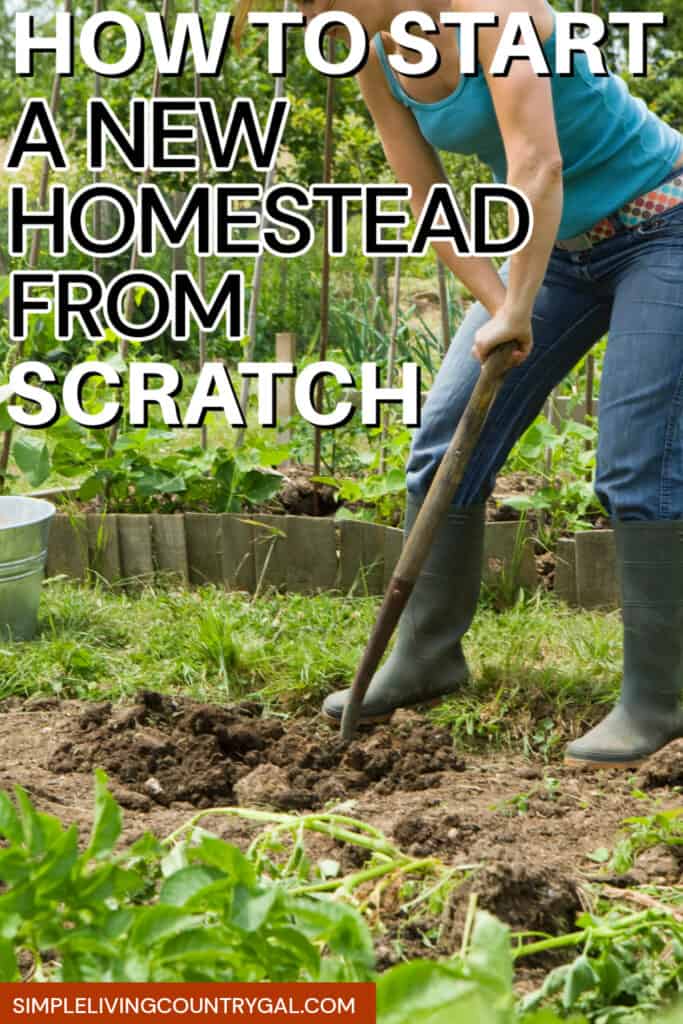
When my husband and I decided to create a homestead, we had nothing but some land and a house. It was little more than a shell at that point and trying to see the end result was hard to do. There are so many parts of homesteading, and trying to do them all at once can create burnout in no time.
We learned that small projects worked best and we were able to use those projects to make a foundation for all that we have today.
Here’s the things about doing something from scratch. It takes time and if you want to be successful you need patience and lots of it.
That’s the bad news. The good news is that if you have a goal that you hope to achieve, a reasonable budget you can stick with, and a desire to be self-sufficient, then all that is left to do is to create a plan. One you can follow along to achieving success as you go.
Homesteading: What Is It and Who Is It For?
Homesteading is a lifestyle of self-sufficiency that is based on a small-scale version of a family farm with an off-grid focus that incorporates the use of renewable energy. It mainly centers around growing, raising, or making what you need and eat so you rely less on outside sources. The homesteading movement can appeal to a broad range of people, including:
- Those seeking to live a more self-reliant lifestyle
- Individuals interested in organic farming and permaculture practices
- Retirees or empty nesters looking for a new challenge
- City dwellers looking to reconnect with nature and simplify their lives
Be sure to grab the FREE Homestead Layout Worksheets below!
The Benefits of a Self-Sufficient Lifestyle
There are many benefits of homesteading. Being self-sufficient brings a sense of empowerment and a healthier, more balanced way of life. By growing and raising your own food, you control what goes into your body, reducing wasted trips to the grocery store. The financial benefits of reduced spending and generating income from homestead products can provide stability and security for an individual or an entire family.
The Backyard Homestead Seasonal Planner: What to Do & When to Do It in the Garden, Orchard, Barn, Pasture & Equipment Shed

Preparing to Start a Homestead
Before you begin, it is important to prepare yourself and your family for what lies ahead.
#1. List and Prioritize Your Homesteading Goals
Take time to talk about and make a list of what you want to achieve with your homestead. If you have a family, be sure to include everyone in this step. Being included from the start will help everyone to be open to the work that comes with homesteading.

#2. Prepare Your Finances
Becoming self-sufficient often requires spending money to get started. Things like shelters, tools, and supplies are just a few things to consider. If possible, pay off as much debt as you can before beginning your homesteading adventure.
Set a strict budget and start saving money to fall back on. Consider building an emergency fund to cover unexpected costs, such as equipment repair. The more you can prepare now the less stressed you will be later on.
#3. Assessing Your Property
Understanding and working with what you have is important in homesteading. Look at your property’s soil quality, how much sun exposure you have in each area, and what available water sources there are on your property.
Take stock of any existing structures that can be repurposed, such as sheds, lean-tos, or outbuildings. If you are limited in what you have now, you will want to adjust your budget to help cover any costs you may incur.
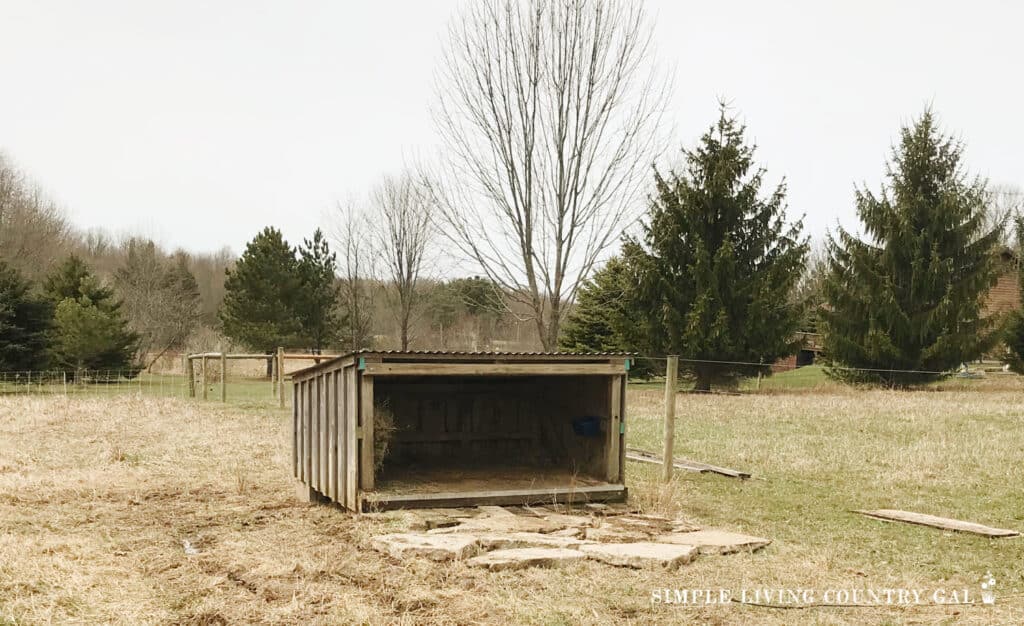
STarting a new homestead
I tend to go all in when starting a new project, and this is what I did with our homestead. This list of tips is meant to help you not make the same mistakes I did so you can be kind to yourself and your family from day one.
#1. Start Small
It’s easy to get over-enthusiastic about homesteading and take on too much at once. Starting with small projects can help you get used to this new way of life slowly without getting in over your head and overwhelmed.
Small Garden Ideas
Gardens are the heart of any homestead. Whether you have acres of land or just a balcony, there’s a garden that will work for you. Remember, just because you have 4 acres of land does not mean you need a 4-acre garden. Start out small and grow in size each year.
• Raised Bed Gardens:
A raised bed garden is a great way to grow a lot in a small amount of space. You can start with one raised bed now and add in more each year. Keep things simple by growing themed gardens such a salsa garden or a baby food garden.
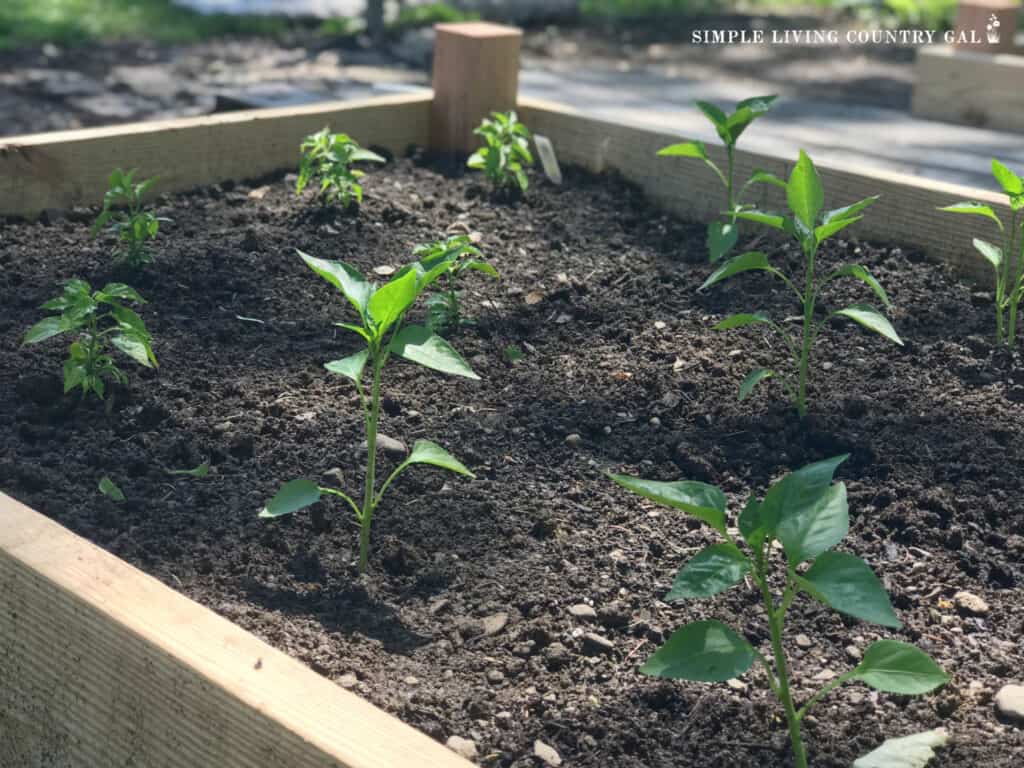
• Container Gardens:
Container gardening is perfect for people who are short on space or time. You may be surprised at how much you can grow in containers, and their popularity has led to many options that can be purchased online. You can grow everything from herbs to tomatoes to peppers and potatoes using grow bags of all shapes and sizes, garden tables, or straw bales.
• One-Pot Herb Gardens:
A simple, one-pot herb garden is perfect for the beginner or anyone with limited space who loves fresh-grown herbs.
You can plant several herb one-pot gardens, put them on a porch in the summer, and bring them in over the winter. This will give you a supply of fresh herbs to enjoy year-round. You can also set up a few grow bags and tuck them into your flowerbeds, utilizing the space you have efficiently.
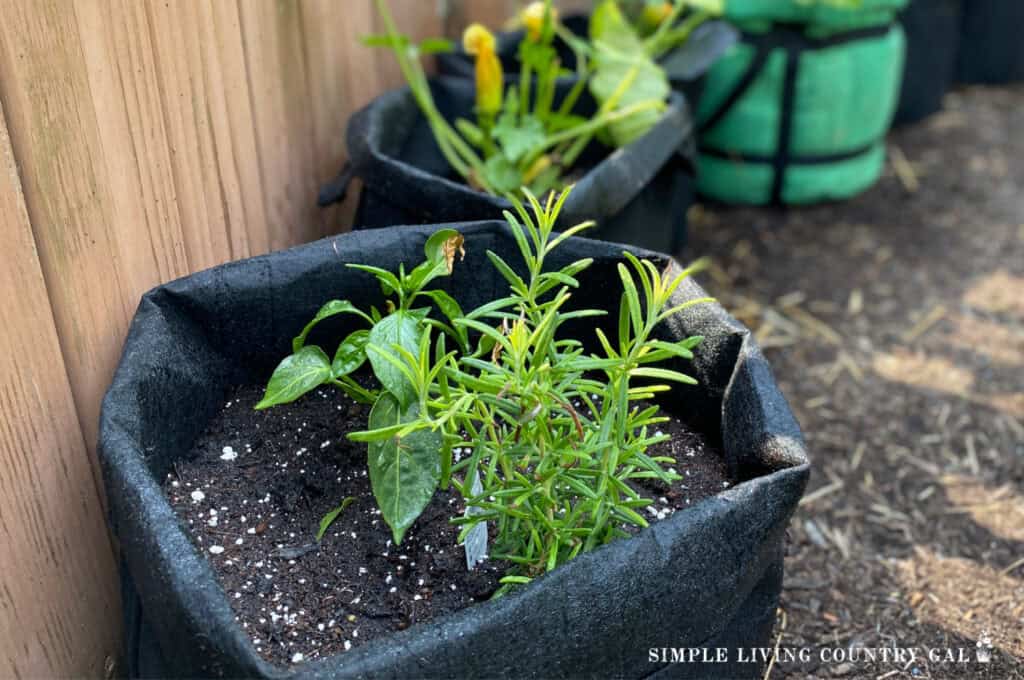
Small Livestock Ideas
If raising animals is one of your goals, consider starting with a small flock of chickens, a few rabbits, or a beehive. When considering livestock, you will want to look for animals that are self-sufficient with their care and are beneficial in what they contribute to a homestead. Here are a few examples.
• Chickens:
A few laying hens require minimal space and will provide you with a daily supply of amazingly delicious fresh eggs. If you are short on time, you can learn how to set up a self sufficient chicken coop here.
If you get 5-6 hens, you will have enough eggs for your family, and you can sell extras. You will need to have a chicken coos, and you have a few options for getting started.
#1. Repurpose what you have – If you have an old shed, you can repurpose it as a new coop for your chickens. Get our guide on converting a shed into a chicken coop for all the steps!
#2. Build a small coop – You can purchase plans online and build a small coop. Get a set of FREE chicken coop plans here!
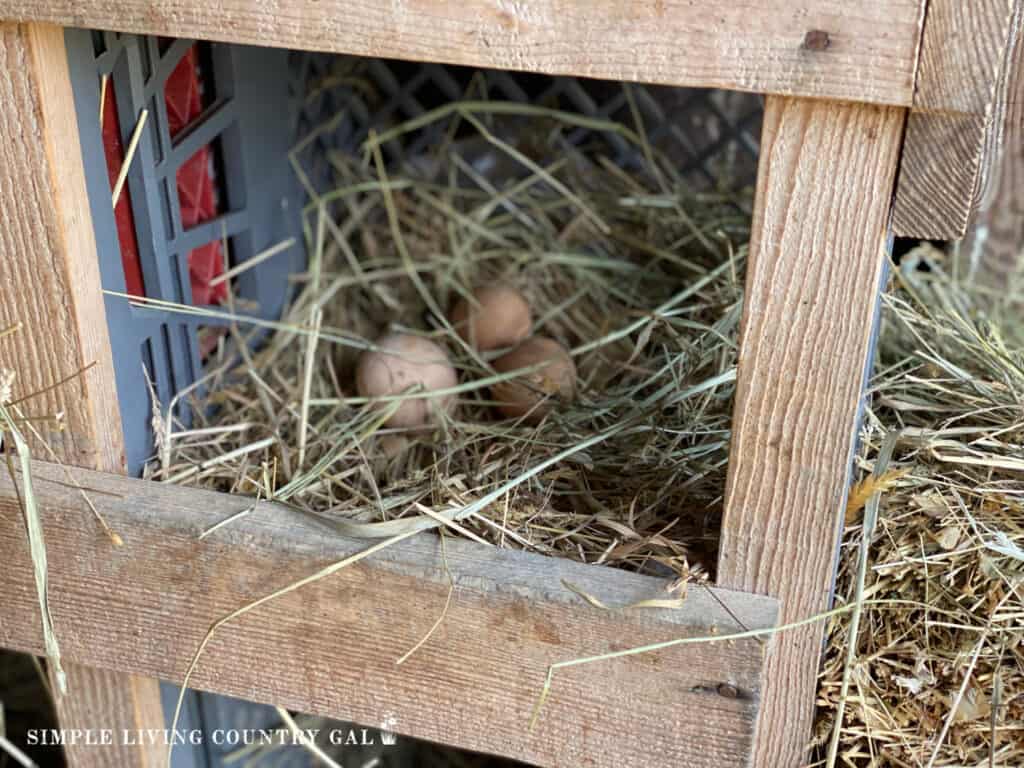
#3. Chicken Tractor – If you are short on space, you can build a DIY chicken tractor with wheels. This way, you can move it around your property to find fresh areas for the chickens to scratch in.
What is a chicken tractor?
A chicken tractor is a small portable coop used to house with the added ability of moving them around. Most chicken tractors have wheels for easier moving and they also have a handle that you can use to pull the tractor style coop to a new area.
Chicken tractors provide a safe space for chickens to graze and help protect the grass in that area. Frequent moving allows your hens to scratch the ground for bugs and worms and gives each area time to replenish.
• Beekeeping:
Bees are so fun to raise and are allowed in many suburban areas and even some cities. They are a great source of honey for your family and excess that can be sold generating a nice side income.
Before starting your first hive, you will need to research your area to confirm bee raising is allowed where you live. Next, be sure to learn what tools and setup you need for bees to thrive. You can look online or visit your local library for books.
Blisstime Beekeeping Supplies, Bee Keeping Starter Kit 26 Pieces Beekeeping Tools Bee Keeping Supplies-All Kit Bee Hive Tools for Beginners and Professional Beekeepers

• Rabbits:
Rabbits are a great fit for a new homestead mainly because they are quiet, docile, and easy to raise. Rabbits can be bred and sold as pets or raised for meat. Their manure is a great addition to your compost area and can be used for your garden.
Rabbits live in hutches that need little space to thrive, allowing you to get started in a small area.
It’s important to know that rabbits breed quickly, which allows you to grow the size of your colony quickly and start bringing in money to fund your homestead. Learn how to start raising rabbits for beginners here.
#2. Limit the need FOR Stores
Homesteading is about self-sufficiency, and that means doing what you can to reduce trips to the store for anything from food to clothing to tools. You can start living this way now as you prepare to start your homestead.
• With your food
Create a plan to provide as much food as possible at home so you are less reliant on grocery stores.
- Start a garden now and each year expand it to include a larger variety of plants.
- Purchasing non-perishable staples in bulk, such as flour and sugar, and learn how to make your own mixes that you can use for baking and cooking.
- Visit local farmers’ markets and purchase produce you are not growing now. Freeze, dry, and can what you can to fill your pantry and freezer.
- Participating in local food swaps, a community garden, or co-ops. This is a great way to round out your food storage while helping others with theirs. It will also introduce you to a a community of people with similar goals.
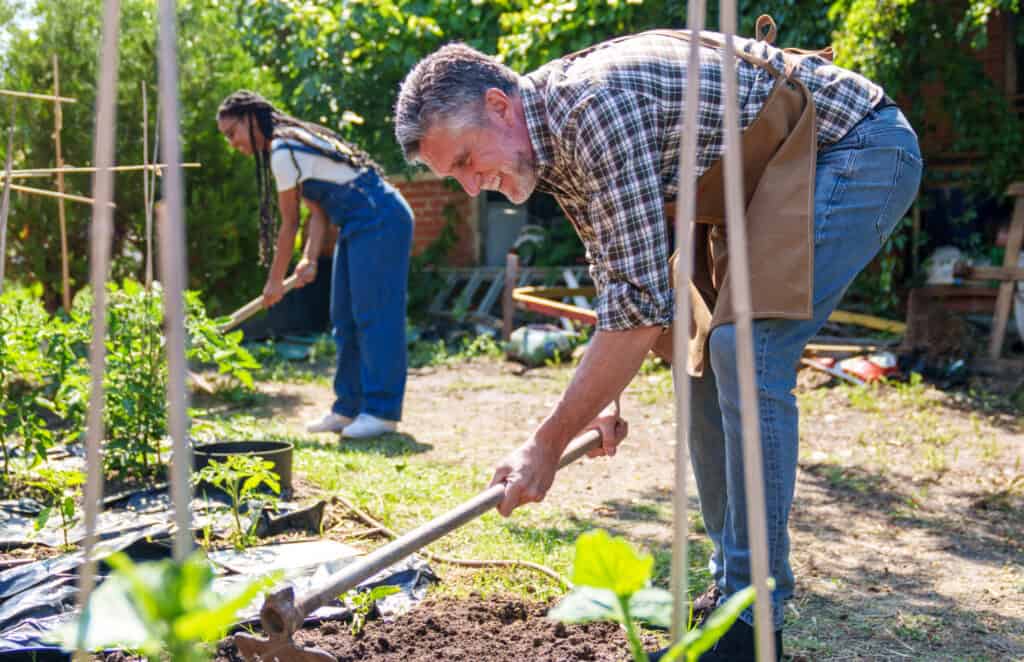
• Repurpose instead of buying
Before heading to the store, take a look at what you already have on hand and look for ways to make do before investing your money on a new item.
- Have weekly soup meals to use up produce in your fridge.
- Have a deep-dish pizza night to use up leftover meats and cheeses.
- Add water to cleaners and detergents stretching things further.
- Turn old towels into rags to replace paper towels.
- Stretch your meat supply by having meatless meals a few times a week.
• Reducing Store Trips
Challenge yourself to reduce the number of times you go to the store each month. When our kids were younger, we shopped one day each month and this had a huge impact on our food budget.
- Plan your meals for the month or have themed meal days and stock your fridge with ingredients.
- Purchase ingredients for quick fix meals such as pizza, spagetti, and
- Buy in bulk and put food in portioned bags for easier use.
- Buy bread in bulk and freeze.
• Swaps
Swaps are a great way to get things you need without spending any money. You can do clothing swaps, tools swaps, craft swaps, and home goods swaps. If there are no swaps in your area, you can easily start one with neighbors, family or friends.
Growing an Existing Homestead
Once you have a few smaller projects under your belt, it’s time to think bigger. Make a list of larger homestead projects that will grow your setup adding value to your overall plan. A few ideas are:
- A barn to house your equipment and/or livestock.
- A compost area near to your garden.
- A pasture for your livestock.
- A milking parlor for your cows or goats.
- A greenhouse to extend your growing season.
- A produce stand to sell excess food from your garden.
- A watering system for your garden, livestock area, or home.
- Solar energy sources to help you be more self-reliant.
Step #1. Choose One Major Project Each Year
Homesteading can get overwhelming quickly. To help it is best to have a plan that breaks things down. Set a goal of one large project each year so you can stay on track and keep your budget in check as well.
- Sit with your spouse and talk about the goals of your new homestead.
- Make a list of large projects you want to work on in the next 3-5 years.
- List out each project on a piece of paper.
- Have a budget for each project so you can start saving now to cover those costs.
- List with it any supplies and tools you will want to have as well.
- If you will need to enlist help, make a note so you can get that lined up prior to your start date.
- Write a project date of when you would like to have each one completed.

Step #2. Prep now
Now that you have a plan for each project, start now getting ready for the first on your target list.
- Start purchasing supplies now so you can keep your budget in check.
- Take stock of the tools you need so you can rent them, purchase them, or borrow them.
- If you will need outside help, ask early so you can get your help committed and reduce any stress of a busy timeline.
Step #3. Set Deadlines
Deadlines will keep you on track and ensure that projects don’t drag on indefinitely. Set a schedule to ensure that all parts fit together smoothly. Knowing you have 5 men coming in on the 15th of June to do the roof will ensure you finish up that area in plenty of time so you are not holding them up. Deadlines and schedules are a great motivator to getting projects done.
Keep Records of your journey
Finally, be sure to document the progress of your new homestead. Take loads of pictures and videos, and write colorful journal entries. This is your story, and no matter how hard it is now, you will want to look back on it later.
Use a notebook or purchase a journal that you can write in throughout your progress. List any mistakes you made and what you learned because of them. Give a voice to each of your accomplishments as your homestead journey plays out.
Starting a homestead from scratch is an ambitious goal, but one that can be done by taking a few key steps. Prep what you can, be thoughtful with each new project, be open to learning, and excited to grow.
Homesteading takes work, but if you are patient with the process, celebrate every win, no matter how small, it will be an experience you also enjoy. Be intentional with each step you take and create a legacy you can pass on to your children and grandchildren.
More Homesteading Resources:
You can find this and more at my favorite Blog Hop!






